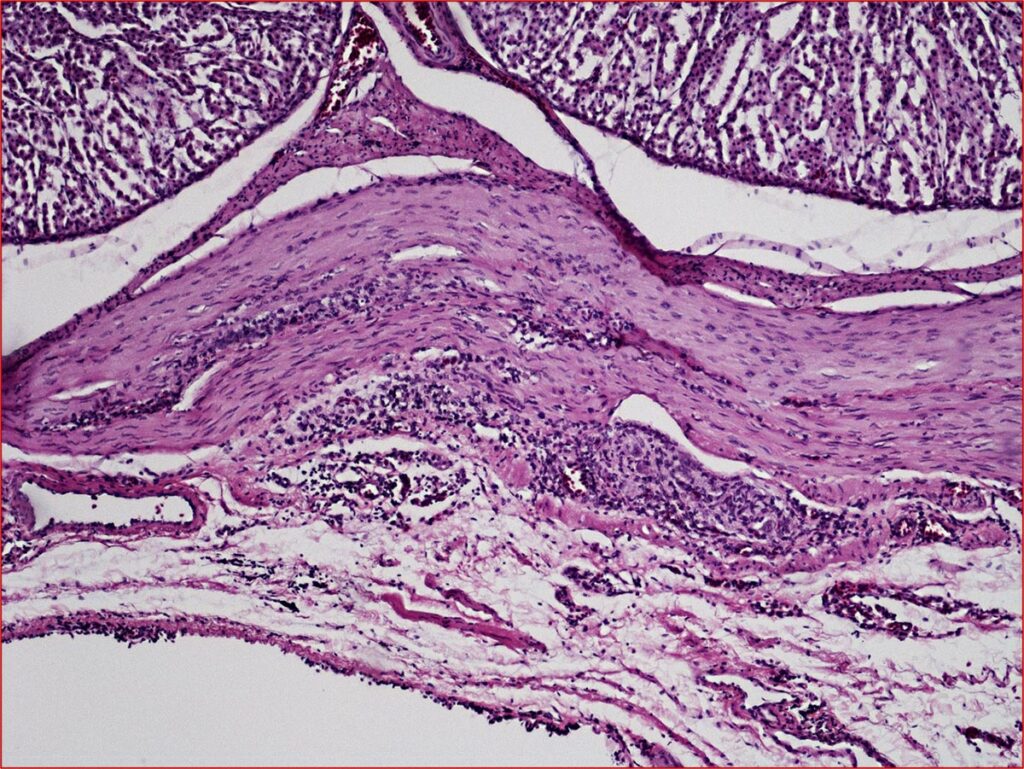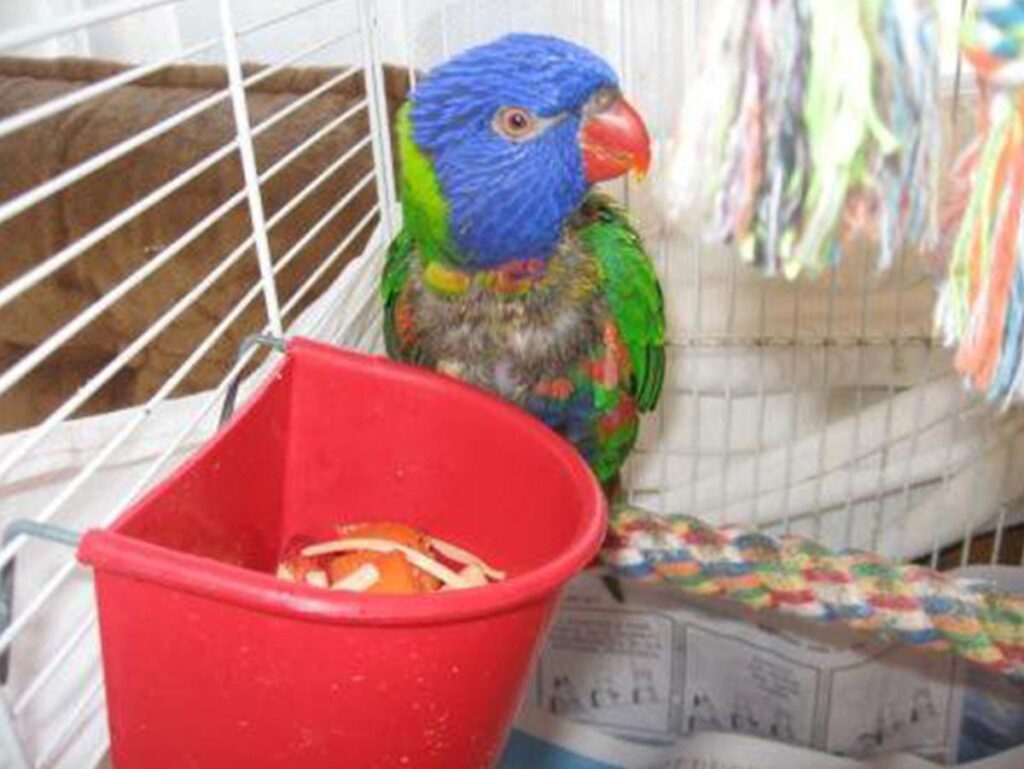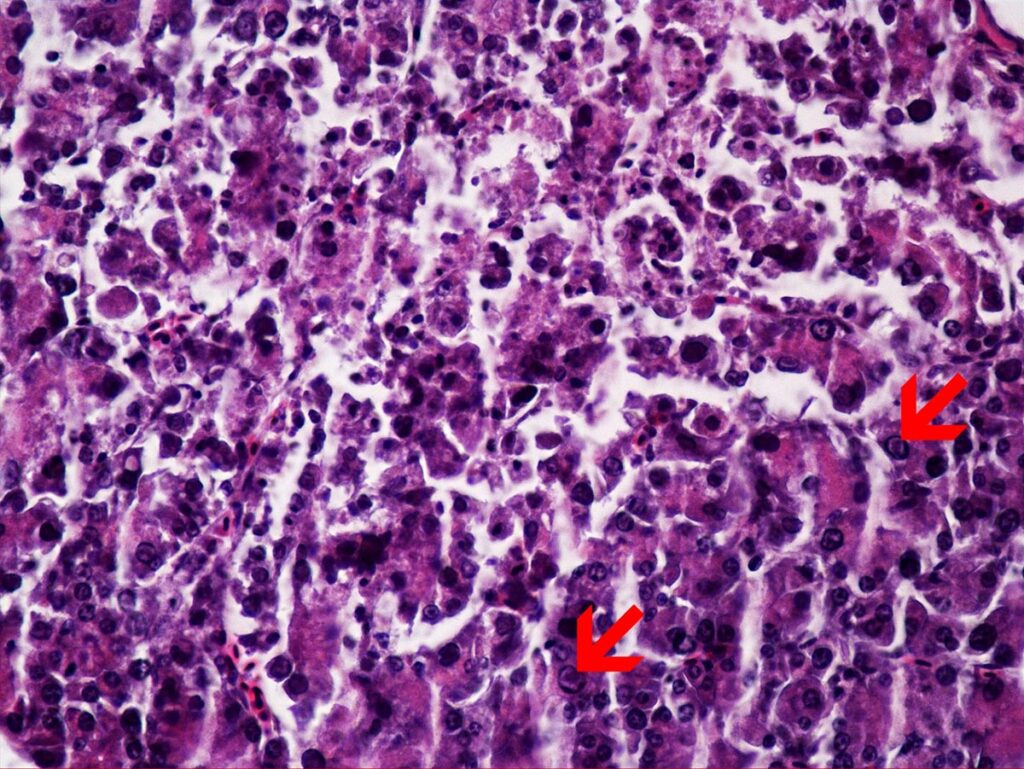PCR check-up when purchasing new parrots
Parrots, which include the popular budgerigars and cockatiels, are commonly kept pets. According to a market research analysis by the German Industrial Association of Pet Care Producers, there were 3.1 million birds in 3% of the German households in 2021. In line with the recommendations of the expert group on the minimum requirements for keeping parrots, these birds are usually not kept as individuals, but in pairs or small groups.
When acquiring a new or an additional parrot, there is a risk that the bird may suffer from a chronic disease and that infectious agents may be introduced into the flock. Laboklin offers PCR profiles for parrots and parakeets, which cover the most common infectious agents and, optionally, include genetic sex determination.
Parrot bornaviruses are the causative agent of PDD (proventricular dilatation disease) in parrots. The disease was first described in 2008. In pet parrots, mainly parrot bornavirus 2 (PaBV-2) und PaBV-4 are detected, with PaBV-4 being the most common. Mixed infections are also possible. Both PaBV-2 and PaBV-4 cause the characteristic chronic neurological and intestinal signs. For other related viruses, the clinical presentation has in some cases not been described yet or is still incomplete.
Typical signs of PDD are the eponymous proventricular dilatation, delayed passage of intestinal contents, excretion of undigested grains and diarrhoea. This may cause digestive disorders and emaciation up to cachexia. In addition, there may be neurological deficits such as ataxias and coordination disorders, epileptic seizures, tremors and lameness. It is also suspected that parrot bornaviruses cause retinitis and blindness, as well as behavioural disorders such as feather plucking and self-mutilation, but this connection has not yet been confirmed in studies. The course of the disease is highly variable and can range from peracute to chronic. Usually, the progress is slow and chronic, recovery is very rare, but not impossible. Asymptomatic carriers of the virus, which shed the virus for life without becoming ill themselves, have been described. The incubation period varies, depending on the virus strain and the parrot species, and has ranged from 3 weeks (in a study with cockatiels) to 9 months in studies. Transmission probably occurs subcutaneously (e.g. claw and bite wounds and other skin lesions); animal experiments have not yet succeeded in transmitting the viruses by oral route. The most reliable way to diagnose PaBV infection is the combination of antibody and pathogen detection. At Laboklin, we offer a comprehensive PCR test for parrot bornaviruses that can detect PaBV-2, PaBV-3, PaBV-4 and PaBV-7. In some birds, only the direct detection of viral RNA is successful, in others, only antibodies are found, while others again are positive in both tests.
However, in many birds, serology is positive, whereas the PCR test is negative, which can be explained by the fact that these viruses are only shed intermittently and, over certain periods of time, cannot be detected directly. Suitable sample materials include cloacal swabs (for PCR, always dry swabs without medium), faeces, feathers, tissue (intestinal tract and neural tissue); during viraemia/acute phases of the disease, EDTA whole blood can be submitted as well.
- Photo credits: Envato Elements
-
Fig. 1: Non-purulent ganglioneuritis in the gastrointestinal tract in PaBV infection
Photo credits: Laboklin
-
Fig. 2: Rainbow lorikeet with psittacine beak and feather disease (PBFD)
Photo credits: Ellen Schöner
-
Fig. 3: Inclusion bodies (red arrows) in the pancreas of a parrot infected with Pacheco’s disease virus
Photo credits: Laboklin
Circoviruses, which cause psittacine beak and feather disease (PBFD), are distributed worldwide and infect numerous species such as macaws, agapornids, grey parrots, amazons and parakeets. Signs and prognosis depend on age, immune status and bird species. Nestlings usually die peracutely, while fledglings have an acute course. In budgerigars, mainly young birds in moult are affected. Feather dystrophy may partly disappear after the next moult. Adult birds often show no signs, but frequently remain infected and can also shed the virus. Clinically, acutely infected birds become lethargic, lose appetite and suffer from vomiting and/or diarrhoea; death may occur within 1 – 2 weeks.
In chronic disease, changes occur in the developing feathers. They are often of poor quality, not developing beyond the feather quill and then break off. If the disease lasts longer, there are also changes in the keratin layer of the beak and claws and it can be noticed that the birds have fractured, black and shiny beaks. As the immune system is weakened, a chronic course often leads to secondary infections (e.g. aspergillosis). The virus is mainly transmitted horizontally. PBFD viruses are stable in the environment for up to 18 months and are primarily transmitted via feather dust. However, the virus is also shed with the faeces, especially in diarrhoea. Nestlings can be infected very early by crop feeding of the adults. Vertical transmission is possible as well. Freshly plucked quills as well as EDTA whole blood (in acutely infected birds) are suitable as sample material for the PCR test. The disease cannot be cured, only supportive treatment is possible, especially if there are secondary infections.
Avian polyomaviruses (APV), such as the budgerigar fledgling disease virus (BFDV), are highly contagious pathogens and the causative agent of a disease known as French moult. In addition to budgerigars, many other parrot species are susceptible to the virus, although the disease is usually limited to nestlings. The virus replicates in the cells of the growing feathers, the skin, liver, spleen, tubular renal epithelium, heart and cerebellum. If signs and symptoms occur, they appear 10 – 14 days after infection. Due to generalised haemorrhage, moderate to massive hepatic necrosis and glomerulopathy, induced by immune complexes, infections in nestlings are usually fatal. In adult birds, septicaemia and hepatitis are seen. In chronic cases, feather malformation and inability to fly occur; affected animals usually hop or run around. Adult birds can become infected, but usually do not fall ill. As asymptomatic carriers, they may shed the virus and might even be able to eliminate it from the body after a few weeks. Infected birds can shed the virus for several weeks to months.
Budgerigars are considered the reservoir, as they shed the virus for up to 6 months, with reduced viral shedding over time. Transmission occurs through inhalation of virus-containing particles from feather dust and faeces. Suitable sample materials are EDTA whole blood (at the beginning of the infection), cloacal swabs (during the infection, until the end) and freshly plucked quills (in chronic disease).
Psittacid herpesvirus 1 (PsHV-1), which causes Pacheco’s disease, is an important disease in parrots that can affect both individual birds as well as entire flocks with hundreds of birds. The clinical case depends on the genotype or serotype and the affected psittacine species. In budgerigars and cockatiels, mild to subclinical cases with virus shedding are reported. In large parrots, such as macaws, amazons, cockatoos or grey parrots, infection often leads to death. If there are any symptoms, they are usually non-specific and include anorexia, apathy and poorly developed plumage. Changes in faeces and an increase in uric acid excretion may occur, too. Occasionally, CNS symptoms are observed. Outbreaks of this disease occur particularly in stressful situations, e.g. capture and quarantine of imported birds, change of owner, hospitalisation, at the beginning of breeding season and the onset of sexual maturity. In addition to PsHV-1, there are also other herpesviruses in parrots and cockatoos that cause papillomas in the throat and the cloaca. Nevertheless, the herpesvirus PCR provided by Laboklin can detect these as well as the Pacheco’s virus. Carriers shed the virus through the mucous membranes in the head and the cloacal area; during viraemia, the virus can also be detected in the blood. Depending on the stage of disease and the shedding, suitable sample materials are EDTA whole blood, dry cloacal swabs and feathers. For Pacheco’s virus, Laboklin also offers serological testing in heparin plasma or serum in a partner laboratory.
Chlamydia, including Chlamydia psittaci (ornithosis/psittacosis), are intracellular bacteria and cause both respiratory (with and without conjunctivitis) and gastrointestinal signs. The cardinal sign of gastrointestinal disorders is lime-green faeces, also possible regurgitation and vomiting, peracute death may occur. Chlamydia are transmitted by airborne particles, which originate in faeces, feather dust or mucus from the respiratory tract. If there is an outbreak, strict hygiene is required, e.g. it should be avoided to exchange bowls between cages and aviaries. Psittacosis is a zoonosis and can easily be transmitted from birds to humans as well as to other domestic animals. Immunocompromised people and pregnant women should therefore avoid contact with infected birds.
In addition to the peracute form of the disease, there are also chronically ill animals and asymptomatic carriers in which the disease can suddenly relapse. These asymptomatic carriers can cause infestation rates of 10 – 40% in breeding facilities and, thus, pathogens may spread unnoticed. Chlamydia are usually only shed intermittently, so for a reliable detection in birds, it is recommended to take multiple samples (faeces and/or cloacal swabs) at intervals of several days (it is possible to submit pooled samples to Laboklin). Repeat testing is recommended after a few weeks or if signs appear. Serological testing for chlamydia in heparin plasma or serum can be done. If antibodies are detected, it indicates that the animal has had contact with the pathogen. As it is an intracellular pathogen, it is, unfortunately, not possible to grow a culture in combination with an antibiogram.
Ellen Schöner
Further reading:
-
Harrison GJ, Lightfoot TL. Clinical Avian Medicine (Vol. I+II). Palm Beach, Florida: Sphinx Publishing Inc.; 2006
-
Ritchie BW, Harrison GJ, Harrison LR. Avian Medicine: Principles and Application. Lake Worth, Florida: Wingers Publishing Inc.; 1994
-
Rubbenstroth D. Avian Bornavirus Research-A Comprehensive Review. Viruses. 2022 Jul 11;14(7):1513. doi: 10.3390/v14071513.







